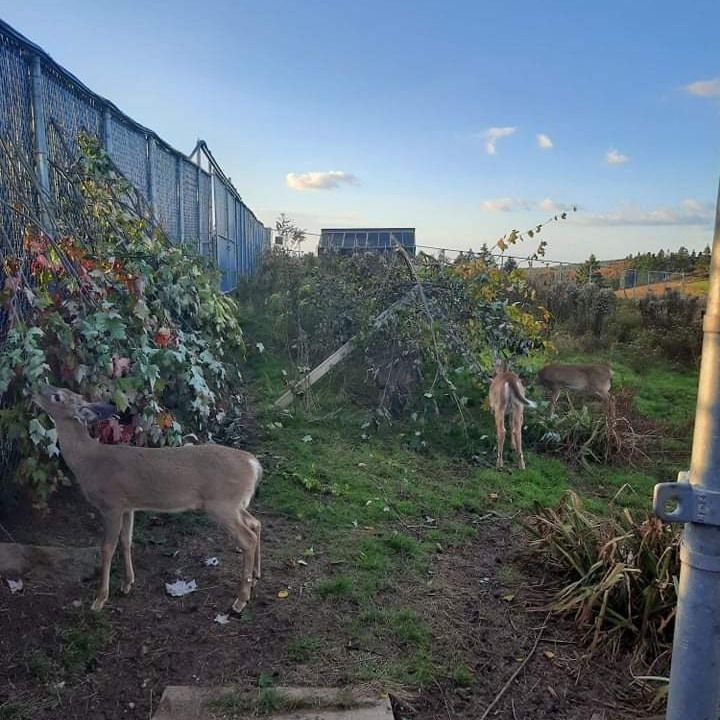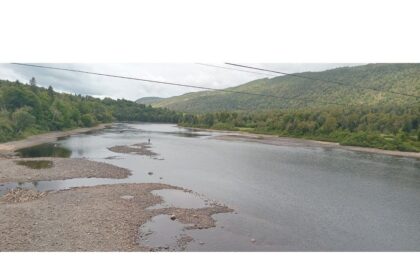Wildlife sanctuary’s need for wood is as diverse as the animals they nurturePublished Jun 11, 2025 • Last updated 12 hours ago • 3 minute readHope for Wildlife put out a request for trees for its animals to help give them a familiar environment and eliminate stress as “trees are often an essential part of their recovery.” Photo by ContribHope Swinimer is thrilled that Hope For Wildlife’s public plea for freshly cut trees has been met by an overwhelming response.A Facebook post Tuesday stating the dire need for trees to help the animals sparked an immediate response from companies and individuals, said Swinimer, the director of Hope For Wildlife.The freshly cut trees provide valuable enrichment for the animals at the charitable wildlife rehabilitation in Seaforth.THIS CONTENT IS RESERVED FOR SUBSCRIBERS ONLY.Subscribe now to access this story and more:Unlimited access to the website and appExclusive access to premium content, newsletters and podcastsFull access to the e-Edition app, an electronic replica of the print edition that you can share, download and comment onEnjoy insights and behind-the-scenes analysis from our award-winning journalistsSupport local journalists and the next generation of journalistsSUBSCRIBE TO UNLOCK MORE ARTICLES.Subscribe or sign in to your account to continue your reading experience.Unlimited access to the website and appExclusive access to premium content, newsletters and podcastsFull access to the e-Edition app, an electronic replica of the print edition that you can share, download and comment onEnjoy insights and behind-the-scenes analysis from our award-winning journalistsSupport local journalists and the next generation of journalistsRegister to unlock more articles.Create an account or sign in to continue your reading experience.Access additional stories every monthShare your thoughts and join the conversation in our commenting communityGet email updates from your favourite authorsSign In or Create an AccountorArticle content“We’ve always needed them this time of year, but we are seeing a big shortage now,” said Swinimer. “Most of our Christmas trees are past their use; they have done what they needed to do from Christmas to now.“Since we were so low on them, we decided to do a call-out for them.”Swinimer said the response to the post has been great.“It’s so wonderful that people are looking at this and want to help,” said Swinimer. “If they were planning on taking out a tree or two, now they can bring them down here.”She said some companies are bringing trailer loads of trees that were taken down to build homes. Swinimer also said many individuals, who were taking down trees on their properties, have offered to deliver them.However, Swinimer does ask people to look at the trees to ensure there are no nests in them before taking them down.The trees help staff at the wildlife centre create a natural habitat for the animals.Article content“We desperately need them, we have more patients than ever,” said Swinimer. “We’ve built some new units that we can decorate and enrich them in such a way that it looks much more like a natural habitat. The trees make the animals much more comfortable and a lot less stressed.”Swinimer said they are looking for many types of trees to suit the variety of animals at Hope For Wildlife.For animals, the trees are a source of food and shelter.“There is lots more enrichment in there for them, even a food supply. A lot of them eat the trees, too. It works out so well to have a big supply of them.“Every animal likes something different,” said Swinimer.“For example, our whitetail deer, those trees are strictly for eating so we love all the fresh maple or poplars, even alders, they will nibble on them. Natural food really aids in their digestion, it helps ween them quicker and gets them off the formula. There is nothing better for any wild animal than the natural food they find in the natural world.Article content“Our units for enrichment are usually the evergreens, like the furs and spruce. The animals get to hide under them, they feel safe and it smells more like nature. There are so many things that are familiar to them and they are beneficial in their development.”Swinimer said trees from six to 12 feet are the most preferred.“It’s hard to get them too big because some of our units are 12-feet tall, anything over that we probably couldn’t use.”She said the organization isn’t able to pick up trees.“It’s our busy time of year, so if people can drop them off that would be great. I am one of those people who hates to cut down a tree for any reason, but if you are thinning out and have to part with a tree, then what better place to bring it than here?“I’m sure in a week or so I will be putting up a post saying we have all the trees we need.”Article content
Hope For Wildlife’s faith in Nova Scotians delivered trees for critters











